Рейтинг книг Jean Lahor
Начиная изучать творчество писателя - уделите внимание произведениям, которые находятся на вершине этого рейтинга. Смело нажимайте на стрелочки - вверх и вниз, если считаете, что какое-то произведение должно находиться выше или ниже в списке. В результате общих усилий, в том числе, на основании ваших оценок мы и получим самый адекватный рейтинг книг Jean Lahor.
-
1.
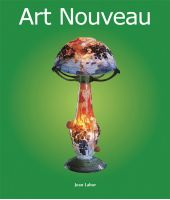 Art Nouveau gives a name to the decorative and architectural style developed in the 1880s and 1890s in the West. Born in reaction to the Industrial Revolution and to the creative vacuum it left behind, Art Nouveau was at the heart of a “renaissance” in the decorative arts. The primary objective of the movement was the creation of a new aesthetic of nature through a return to the study of natural subjects. In order to achieve this, artists such as Gustav Klimt, Koloman Moser, Antoni Gaudí, Jan Toorop, and William Morris favoured innovation in technique and novelty of forms. After its triumph at the Paris Universal Exposition in 1900, the trend continued and has inspired many artists ever since. Art Deco, the successor of Art Nouveau, appeared after World War II. ... Далее
Art Nouveau gives a name to the decorative and architectural style developed in the 1880s and 1890s in the West. Born in reaction to the Industrial Revolution and to the creative vacuum it left behind, Art Nouveau was at the heart of a “renaissance” in the decorative arts. The primary objective of the movement was the creation of a new aesthetic of nature through a return to the study of natural subjects. In order to achieve this, artists such as Gustav Klimt, Koloman Moser, Antoni Gaudí, Jan Toorop, and William Morris favoured innovation in technique and novelty of forms. After its triumph at the Paris Universal Exposition in 1900, the trend continued and has inspired many artists ever since. Art Deco, the successor of Art Nouveau, appeared after World War II. ... Далее -
2.
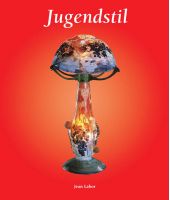 Der Jugendstil (französisch : Art nouveau) bezeichnet einen in den 1880er und 1890er Jahren entwickelten Stil in der angewandten Kunst und der Architektur der westlichen Welt. Er stellte eine Reaktion auf die industrielle Revolution und das kreative Vakuum in ihrem Gefolge dar und bildete den Nukleus der „Renaissance“ der angewandten Künste. Das Hauptziel der Bewegung bestand darin, durch eine Rückkehr zum Studium natürlicher Objekte eine neue Ästhetik der Natur zu entwickeln. Um dieses Ziel zu erreichen, bevorzugten Künstler wie Gustav Klimt, Koloman Moser, Antoni Gaudí, Jan Toorop und William Morris innovative Techniken und neue Formen. Der Jugendstil setzte sich mit seinem Triumph auf der Pariser Weltausstellung des Jahres 1900 endgültig durch und inspirierte viele Künstler. Die Art déco etablierte sich nach dem Zweiten Weltkrieg als Nachfolgerin des Jugendstils. ... Далее
Der Jugendstil (französisch : Art nouveau) bezeichnet einen in den 1880er und 1890er Jahren entwickelten Stil in der angewandten Kunst und der Architektur der westlichen Welt. Er stellte eine Reaktion auf die industrielle Revolution und das kreative Vakuum in ihrem Gefolge dar und bildete den Nukleus der „Renaissance“ der angewandten Künste. Das Hauptziel der Bewegung bestand darin, durch eine Rückkehr zum Studium natürlicher Objekte eine neue Ästhetik der Natur zu entwickeln. Um dieses Ziel zu erreichen, bevorzugten Künstler wie Gustav Klimt, Koloman Moser, Antoni Gaudí, Jan Toorop und William Morris innovative Techniken und neue Formen. Der Jugendstil setzte sich mit seinem Triumph auf der Pariser Weltausstellung des Jahres 1900 endgültig durch und inspirierte viele Künstler. Die Art déco etablierte sich nach dem Zweiten Weltkrieg als Nachfolgerin des Jugendstils. ... Далее -
3.
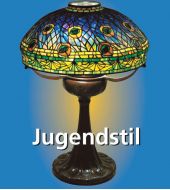 Seit dem großen Erfolg auf der Pariser Weltausstellung ist der Einfluss des Jugendstils ungebrochen und hat viele großartige Künstler hervorgebracht. Dieser Stil fungierte als künstlerische Antwort auf die industrielle Revolution und das kreative Vakuum, das diese zurückließ, indem er vor allem dem Kunstandwerk neue Stile und Formen erschloss. Das Mega Square Jugendstil versammelt Werke aller Kunstformen, von Design und Malerei bis zur Architektur, und die bekanntesten Künstler, wie beispielsweise Gustav Klimt, Koloman Moser, Antoni Gaudí, Jan Toorop und William Morris. In seinem handlichen Format ist es das perfekte Geschenk für Kunstliebhaber. ... Далее
Seit dem großen Erfolg auf der Pariser Weltausstellung ist der Einfluss des Jugendstils ungebrochen und hat viele großartige Künstler hervorgebracht. Dieser Stil fungierte als künstlerische Antwort auf die industrielle Revolution und das kreative Vakuum, das diese zurückließ, indem er vor allem dem Kunstandwerk neue Stile und Formen erschloss. Das Mega Square Jugendstil versammelt Werke aller Kunstformen, von Design und Malerei bis zur Architektur, und die bekanntesten Künstler, wie beispielsweise Gustav Klimt, Koloman Moser, Antoni Gaudí, Jan Toorop und William Morris. In seinem handlichen Format ist es das perfekte Geschenk für Kunstliebhaber. ... Далее -
4.
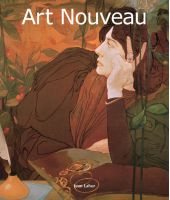 La expresión Art Nouveau hace referencia a un estilo decorativo y arquitectónico desarrollado en Occidente en las décadas de 1880 y 1890. Nacido como reacción a la revolución industrial y al vacío creativo que dejó tras de sí, el Art Nouveau fue el núcleo de un “renacimiento” de las artes decorativas. El objetivo fundamental del movimiento era la creación de una nueva estética de la Naturaleza a través de un retorno al estudio de los temas naturales. Para lograrlo, artistas como Gustav Klimt, Koloman Moser, Antoni Gaudí, Jan Toorop y William Morris favorecieron la innovación en la técnica y la novedad de las formas. Después de su triunfo en la Exposición Universal de París de 1900, la tendencia ha continuado inspirando a muchos artistas desde entonces. El Art Déco, sucesor del Art Nouveau, surgió tras la Segunda Guerra Mundial. ... Далее
La expresión Art Nouveau hace referencia a un estilo decorativo y arquitectónico desarrollado en Occidente en las décadas de 1880 y 1890. Nacido como reacción a la revolución industrial y al vacío creativo que dejó tras de sí, el Art Nouveau fue el núcleo de un “renacimiento” de las artes decorativas. El objetivo fundamental del movimiento era la creación de una nueva estética de la Naturaleza a través de un retorno al estudio de los temas naturales. Para lograrlo, artistas como Gustav Klimt, Koloman Moser, Antoni Gaudí, Jan Toorop y William Morris favorecieron la innovación en la técnica y la novedad de las formas. Después de su triunfo en la Exposición Universal de París de 1900, la tendencia ha continuado inspirando a muchos artistas desde entonces. El Art Déco, sucesor del Art Nouveau, surgió tras la Segunda Guerra Mundial. ... Далее -
5.
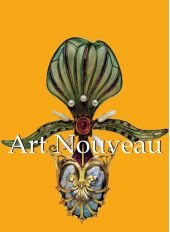 Ever since its triumph at the Paris Universal Exposition, Art Nouveau has continued to inspire artists. The movement offered an artistic response to the industrial revolution and the creative vacuum left in its wake, exerting a huge impact on the decorative arts. Art Nouveau spans all forms of expression – including design, painting and architecture – and covers artists such as Gustav Klimt, Koloman Moser, Antoni Gaudí, Jan Toorop, and William Morris. ... Далее
Ever since its triumph at the Paris Universal Exposition, Art Nouveau has continued to inspire artists. The movement offered an artistic response to the industrial revolution and the creative vacuum left in its wake, exerting a huge impact on the decorative arts. Art Nouveau spans all forms of expression – including design, painting and architecture – and covers artists such as Gustav Klimt, Koloman Moser, Antoni Gaudí, Jan Toorop, and William Morris. ... Далее -
6.
 Art Nouveau gives a name to the decorative and architectural style developed in the 1880s and 1890s in the West. Born in reaction to the Industrial Revolution and to the creative vacuum it left behind, Art Nouveau was at the heart of a “renaissance” in the decorative arts. The primary objective of the movement was the creation of a new aesthetic of nature through a return to the study of natural subjects. In order to achieve this, artists such as Gustav Klimt, Koloman Moser, Antoni Gaudí, Jan Toorop, and William Morris favoured innovation in technique and novelty of forms. After its triumph at the Paris Universal Exposition in 1900, the trend continued and has inspired many artists ever since. Art Deco, the successor of Art Nouveau, appeared after World War II. ... Далее
Art Nouveau gives a name to the decorative and architectural style developed in the 1880s and 1890s in the West. Born in reaction to the Industrial Revolution and to the creative vacuum it left behind, Art Nouveau was at the heart of a “renaissance” in the decorative arts. The primary objective of the movement was the creation of a new aesthetic of nature through a return to the study of natural subjects. In order to achieve this, artists such as Gustav Klimt, Koloman Moser, Antoni Gaudí, Jan Toorop, and William Morris favoured innovation in technique and novelty of forms. After its triumph at the Paris Universal Exposition in 1900, the trend continued and has inspired many artists ever since. Art Deco, the successor of Art Nouveau, appeared after World War II. ... Далее
Комментарии:


